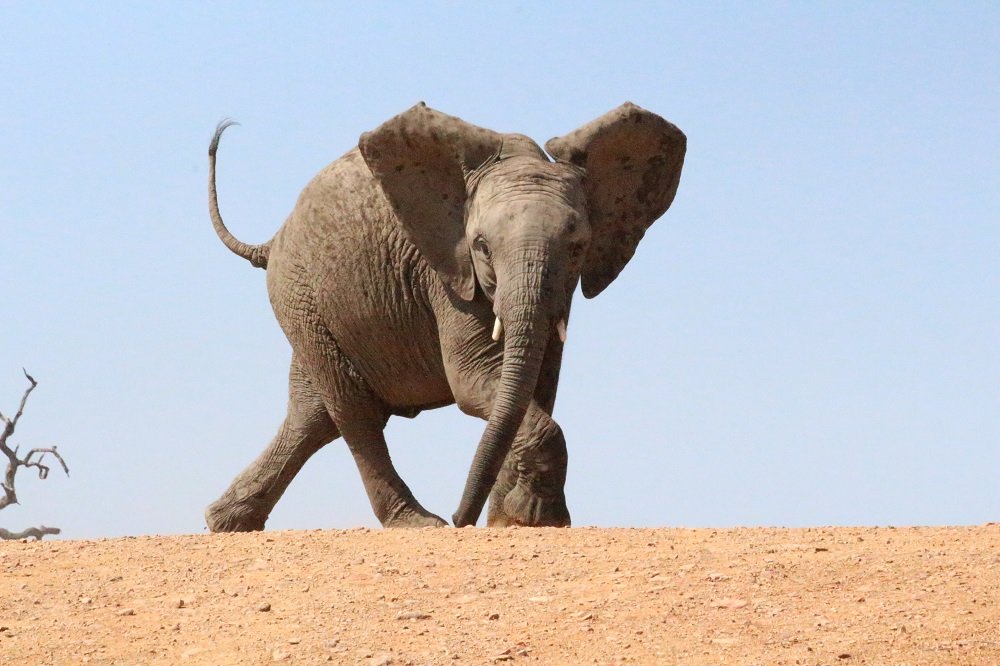
Great wildlife preserves, reserves and parks exist for a number of reasons. In some cases someone was blown away by the scenery and thought “this needs saving”. In some cases someone thought “there seems to be a lot of animals here, let’s keep things that way”. Still others happen because no one had done anything with the land yet and no one wanted the land anyway. Madikwe, in South Africa, wasn’t a site of importance before it came into existence. It was farmland, and marginal farmland at that, of not much use to anyone, and it occurred to someone that it would be better for the world, and the local people, if the area was restored and made wild again. And so South Africa’s fifth largest park came to be (it’s worth remembering that its largest park, Kruger, is the size of Israel) on marginal land that no one in particular could do much with. And it would be really good if the park was managed for the benefit of the people that lived around it, with the income of the pricey resorts going to the locals. And lo, it was good.
I stumbled on Madikwe completely by accident. I was planning a trip to South Africa, I had about five days to fill, I wanted to get a bunch of desert species (particularly the Springbok – not a bird) in a way that wasn’t too hard to reach from Johannesburg. My books weren’t helping much so I had resorted to looking for large green areas on Google Maps on the border of South Africa and Botswana, and I happened on Madikwe. I had a look at the website and it looked interesting. I consulted my South African Birdfinder by Callan Cohen et al, an otherwise great book, and all it had to say about the place was that it was a good place to get Yellow-throated Sandgrouse. Undaunted I went anyway. I’m so glad I did.
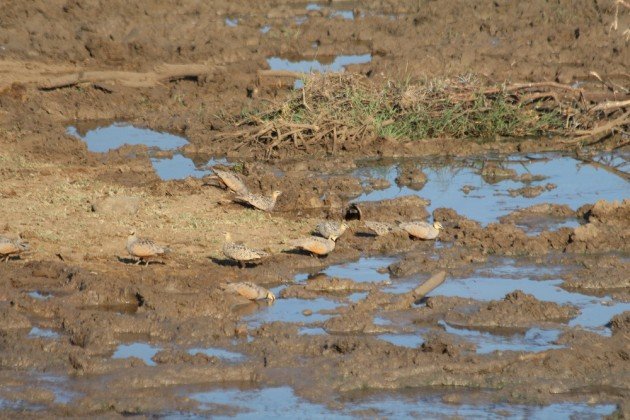 I did find my Yellow-throated Sandgrouse at Madikwe!
I did find my Yellow-throated Sandgrouse at Madikwe!
Madikwe may have been farmland once upon a time but these days it has been fully restored as an astonishing game reserve. It’s the only park I have ever been to that not only have I seen all five of the Big Five (Lion, Leopard, African Buffalo, White Rhino and African Elephant) in, but seen them all on the same day. The park has a number of top end reserves (and one mid-rage place, were I stayed) who all work together to ensure that any animal seen is shared – but, crucially, there is also a queueing system to ensure that animals aren’t harassed with a travelling circus when they are found. Yes, you may have to wait a few anxious minutes when a Leopard is found, but when you do get your time with it it is unstressed and at ease and you aren’t surrounded by yobs. Having been to some other parks in Africa, it’s an improvement.
Lions are boring and should be avoided on safari, but I quite liked this one, even if he had ticks.
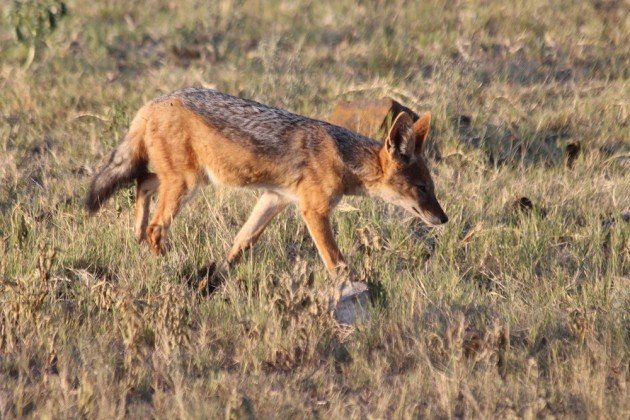 Black-backed Jackals are awesome and smaller than you’d think.
Black-backed Jackals are awesome and smaller than you’d think.
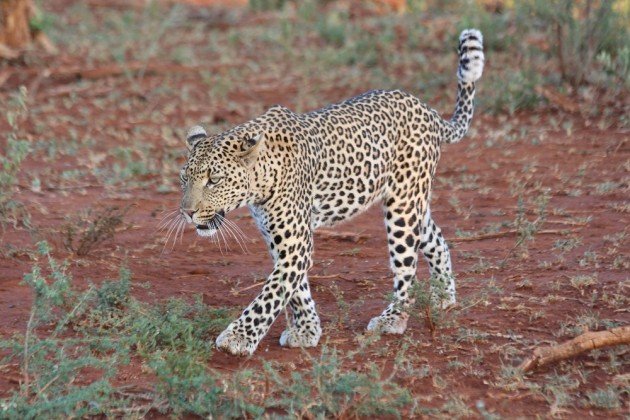 Leopards are also awesome and I saw two at Madikwe
Leopards are also awesome and I saw two at Madikwe
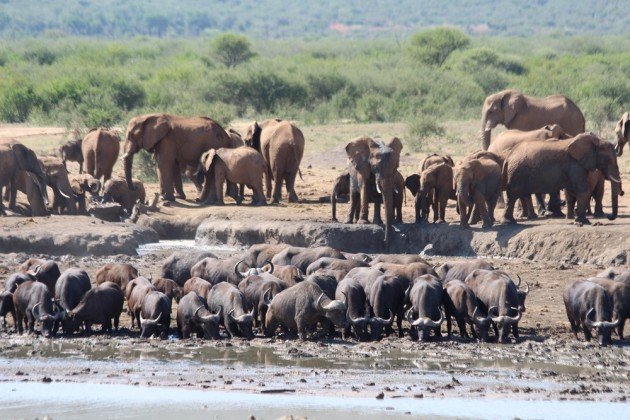 Madikwe has perhaps too many elephants. There are very few trees left
Madikwe has perhaps too many elephants. There are very few trees left
The park straddles the semi-border between savannah and the Kalahari Desert on the edge of the Mariko River that forms the border between South Africa and Botswana, and as such catch a bunch of common savannah species like Giraffes, Tsessebbe, Spotted Hyaena, Black-backed Jackal, Klipspringer, Plains Zebra, Blue Wildebeest, and Hartebeest as well as more deserty species like (the desired) Springbok, Gemsbok and Springhare. It was here I managed to finally find my Brown Hyaena, making that family the first family of mammals of which I have seen every species (Spotted, Brown, Striped Hyaenas and Aardwolf)). The park also has Cheetahs and Painted Wolves (and while I didn’t see the later, they are fairly reliable).
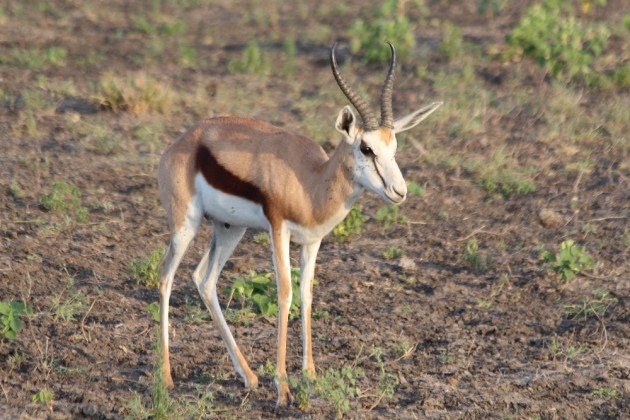 Springbok were one of my targets, and I got them!
Springbok were one of my targets, and I got them!
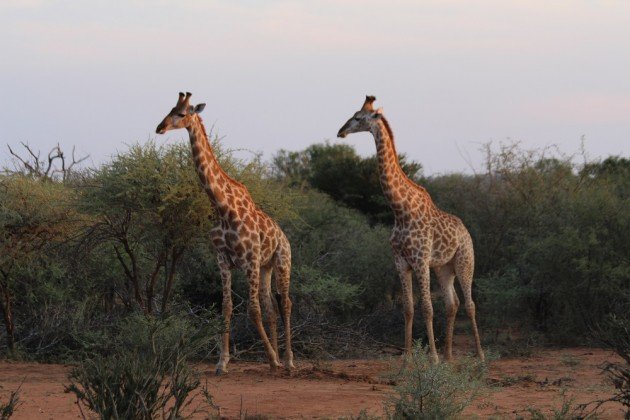 I never get bored of Giraffes.
I never get bored of Giraffes.
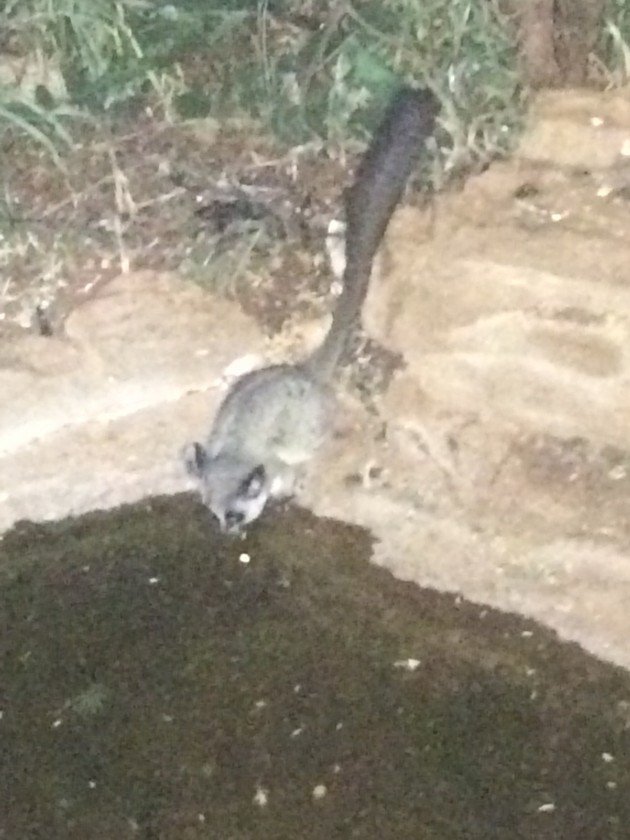 A terrible shot of a tiny Lesser Bushbaby in camp
A terrible shot of a tiny Lesser Bushbaby in camp
Oh, this is a bird site, almost forgot. Yes, there are birds. I managed to get 88 species in three days, which may not seem massively impressive, but note 1) I am a terrible birder and 2) most birding happens in a truck. A very nice, 4-wheel drive safari and above all else comfy truck, but a truck none the less. The species found are a mix of savannah and desert species, including some impressive birds of prey like the Martial Eagle and African Hawk-eagle. I picked up a number of striking lifers, like the Great Sparrow, Crimson Shrike, Shaft-tailed Whydah, Chestnut-backed Sparrowlark, Abdim’s Stork, Southern Pied Babbler, Purple Rollers, Black-throated Canary and my personal favourite, the Violet-eared Waxbill.
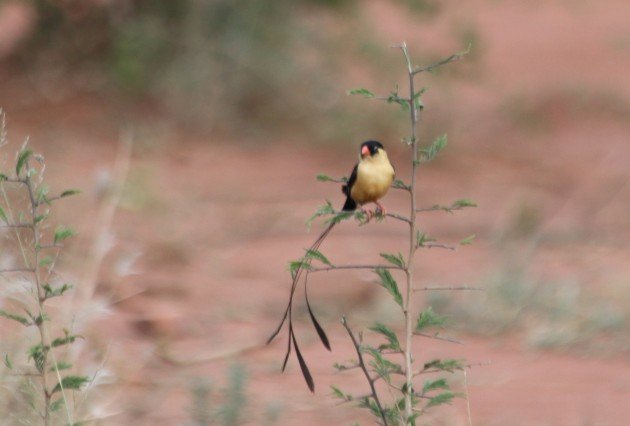 A Shaft-tailed Whydah, a member of a small African family of cuckoo-finches.
A Shaft-tailed Whydah, a member of a small African family of cuckoo-finches.
Purple Roller
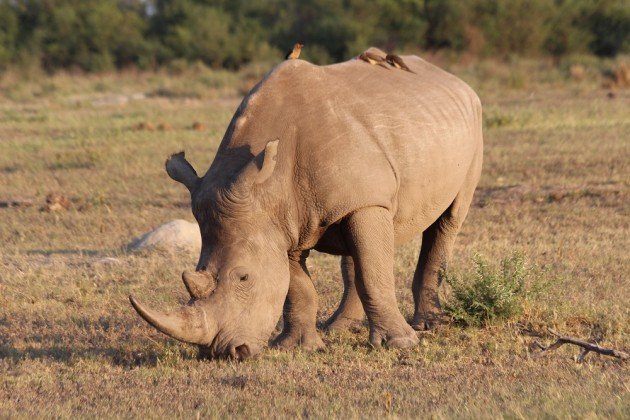 Some Red-billed Oxpeckers on some big thing
Some Red-billed Oxpeckers on some big thing
I suspect it’s unlikely that Madikwe will enter the canon of unmissable South African birding destinations, as it doesn’t have impressive numbers of hard-to-get species, localised endemics or the like. But I think it should be on the list of anyone that wants a knockout experience to share with non-birders. I’ve written before about destinations that can appeal to the non-birdy people in your life, and Madikwe’s sensational safari experience, and outstanding network of lodges, makes it a great place for all but the most jaded. Throw in the outstanding ecotourism ethos, and you have a winner, and a place I look forward to returning to.
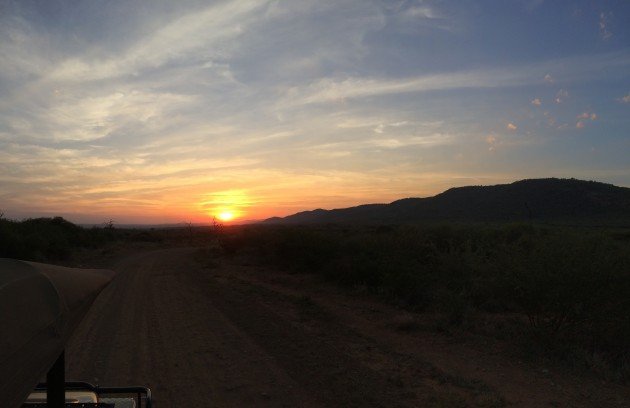 After the day of animals, a drink as the sun sets. I stayed with Mosetlha Bush Camp and would highly recommend them for a unique bush experience
After the day of animals, a drink as the sun sets. I stayed with Mosetlha Bush Camp and would highly recommend them for a unique bush experience

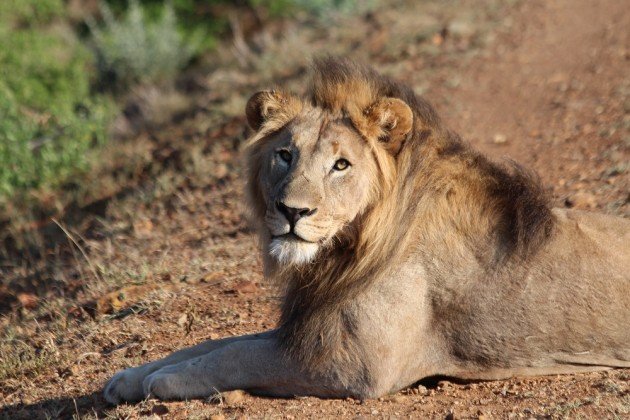
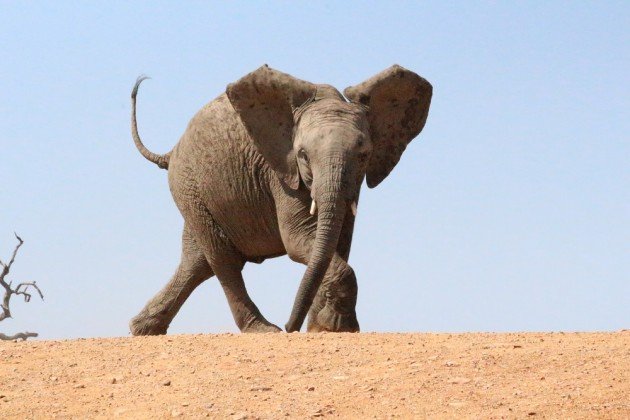
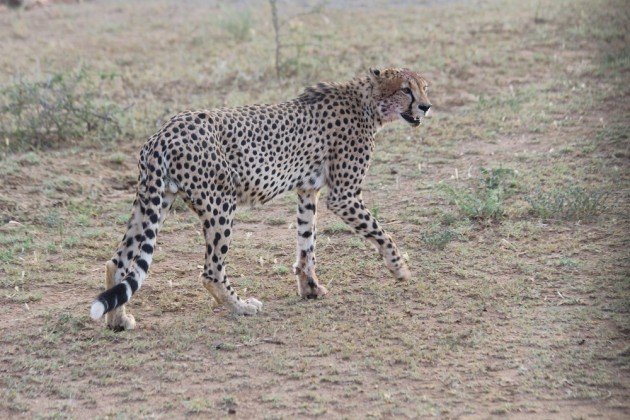
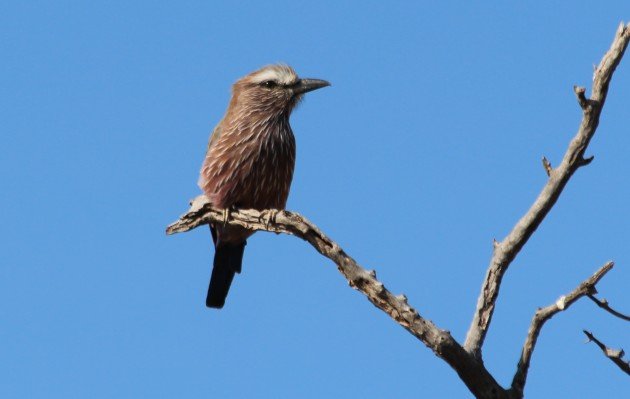










Birded the same place, with the same Mosetlha Bush Camp… the only difference is, I was some dozen years younger and Madikwe was some 20 miles from my home in my adopted homeland of Botswana…
I wrote about it here at 10K, and you can find it through the Madikwe tag that you previously introduced and I added to that post